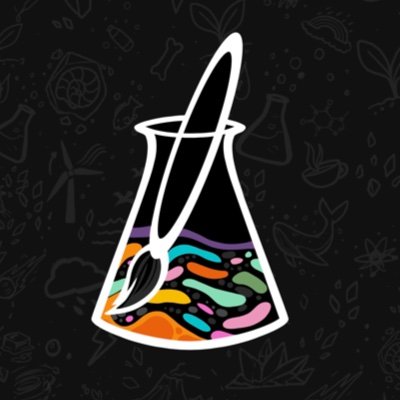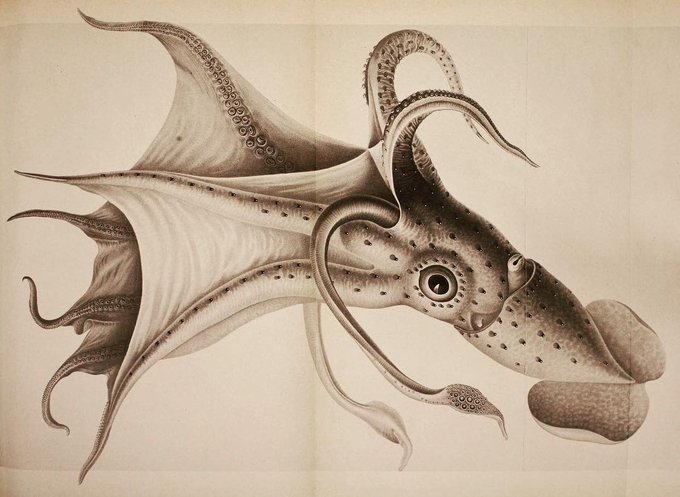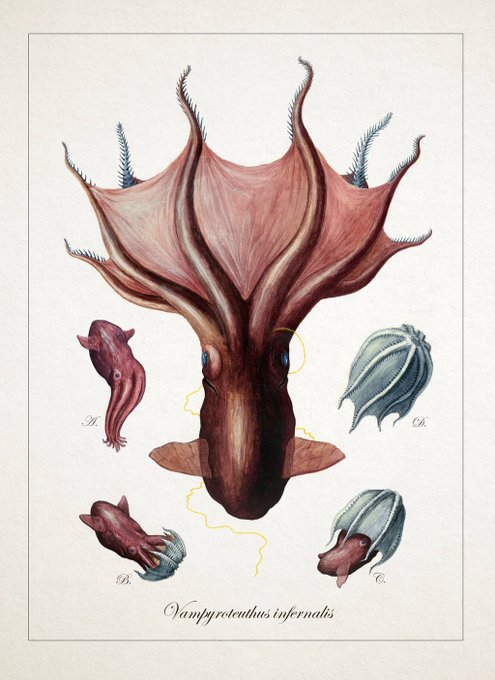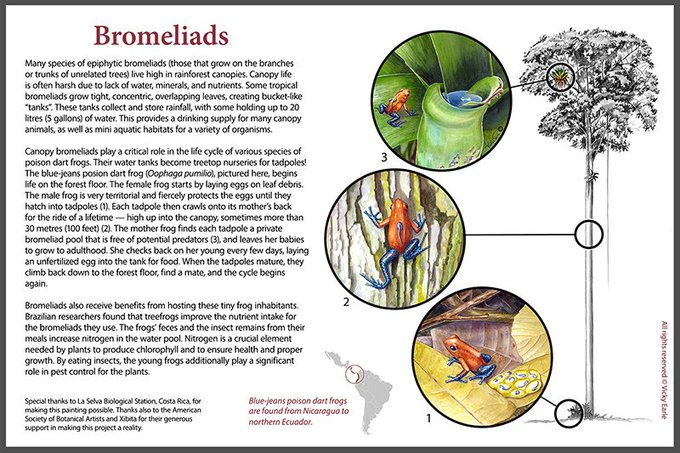Another image derived from particle trajectory data. This one uses an exponential easing function for the interpolation. By @marcus_volz
I went through a big phase practicing my modelling and rendering skills when I was first learning #3D #radiolaria #sciart @NickyLWebster
Anyone here learning #SubstanceDesigner? Amazing procedural #brain material by
Alexandr Gluhachev via @artstationhq https://t.co/pzA1jLgQfJ #3D #SciArt #medicalillustration
There is in fact a great tumblr on #vampiresquid: https://t.co/1UDpAxkce4
Though I'll always be a sucker (heh) for the old #SciArt illustrations (by Carl Chun & Kevin studios @DeviantArt). The last pic I have hanging on my bedroom wall (with all the #haeckel illustrations)
I also love Iori Tomita's cleared and stained animals 😍
https://t.co/u9p6H2VxAX
#BioArt #SciArt
Trying for a histo theme today, gotta give a shout out to my friend professor Steve Downing who educated me about the rheinberg filters. Go check out his HistoArt https://t.co/TCPdmPXmaP via @Etsy
G'Day! Today's focus for @IAmSciArt is Medical Illustration! This is the #MedArt I enjoy doing. Have you done medical art you love? Please share with #SciArt
This is the #SciArt I love to do – I’m passionate about natural science illustration, biodiversity and conservation. @DrawInNature @IAmSciArt
In 1515 rock-star #sciartist, Albrecht Dürer, created a #woodblock print based on a description & sketch that arrived in Lisbon. He had never actually seen a rhino. The field of comparative #anatomy was thriving (so too were small print presses)
[ image: https://t.co/JBTP2DlPqh ]






























